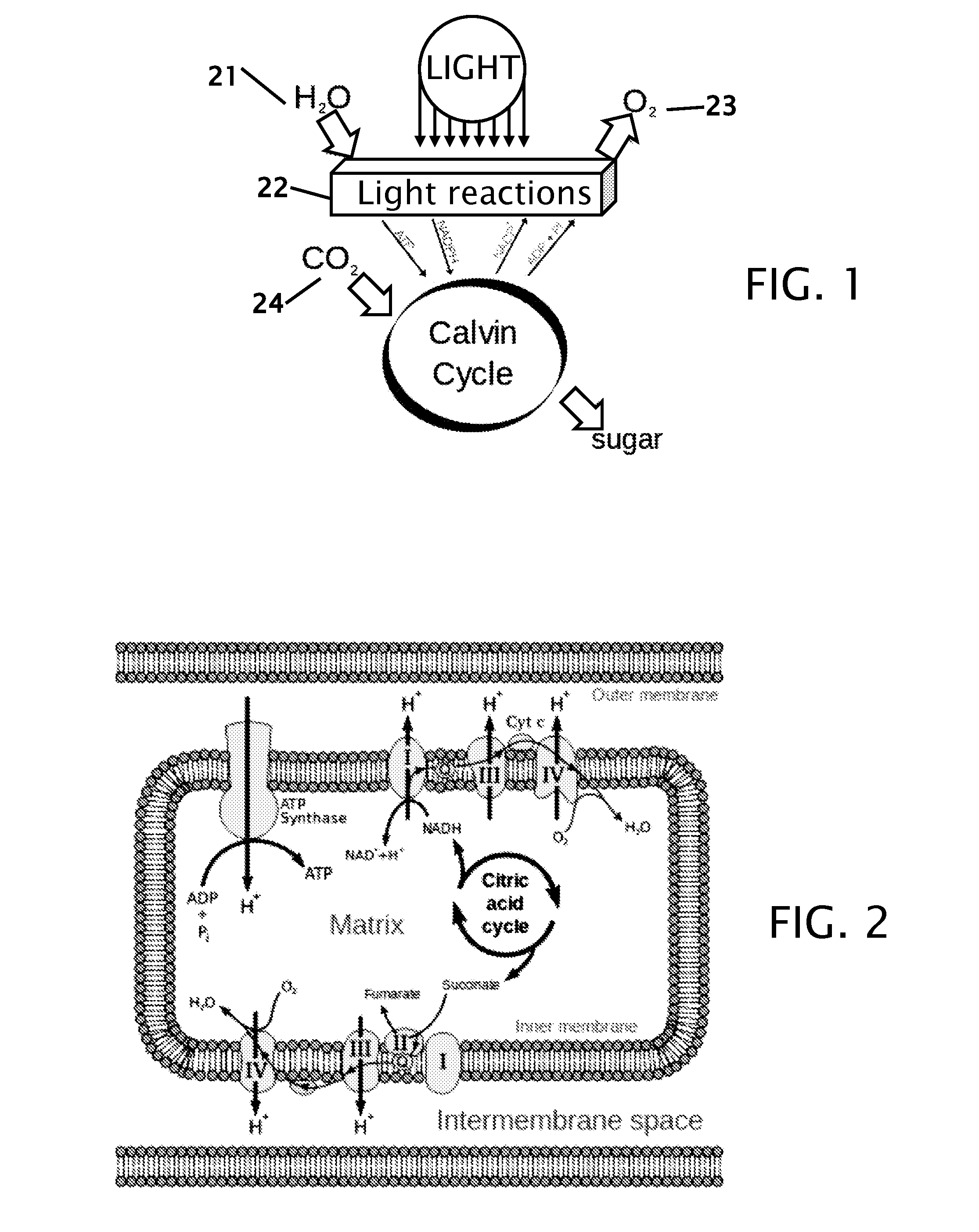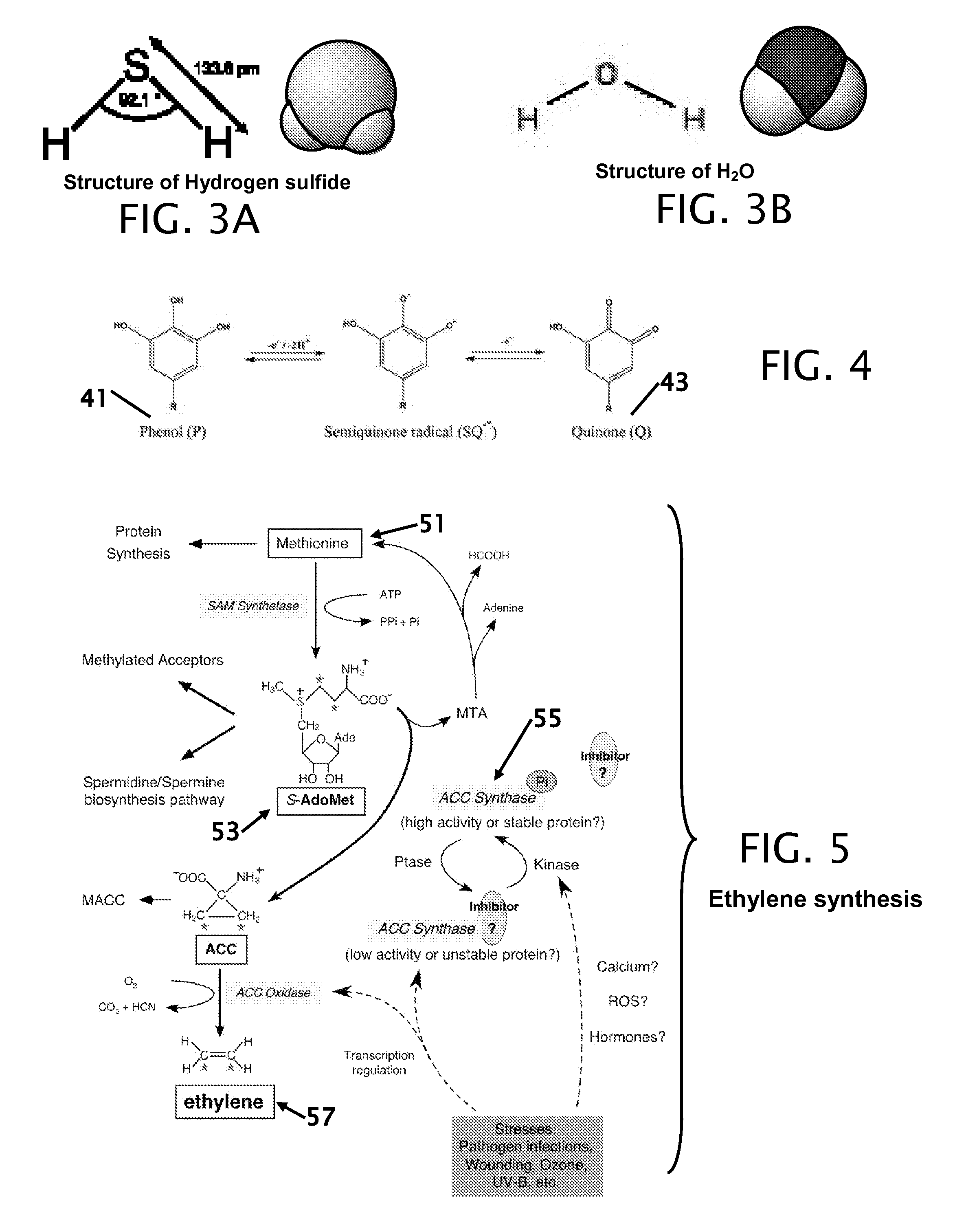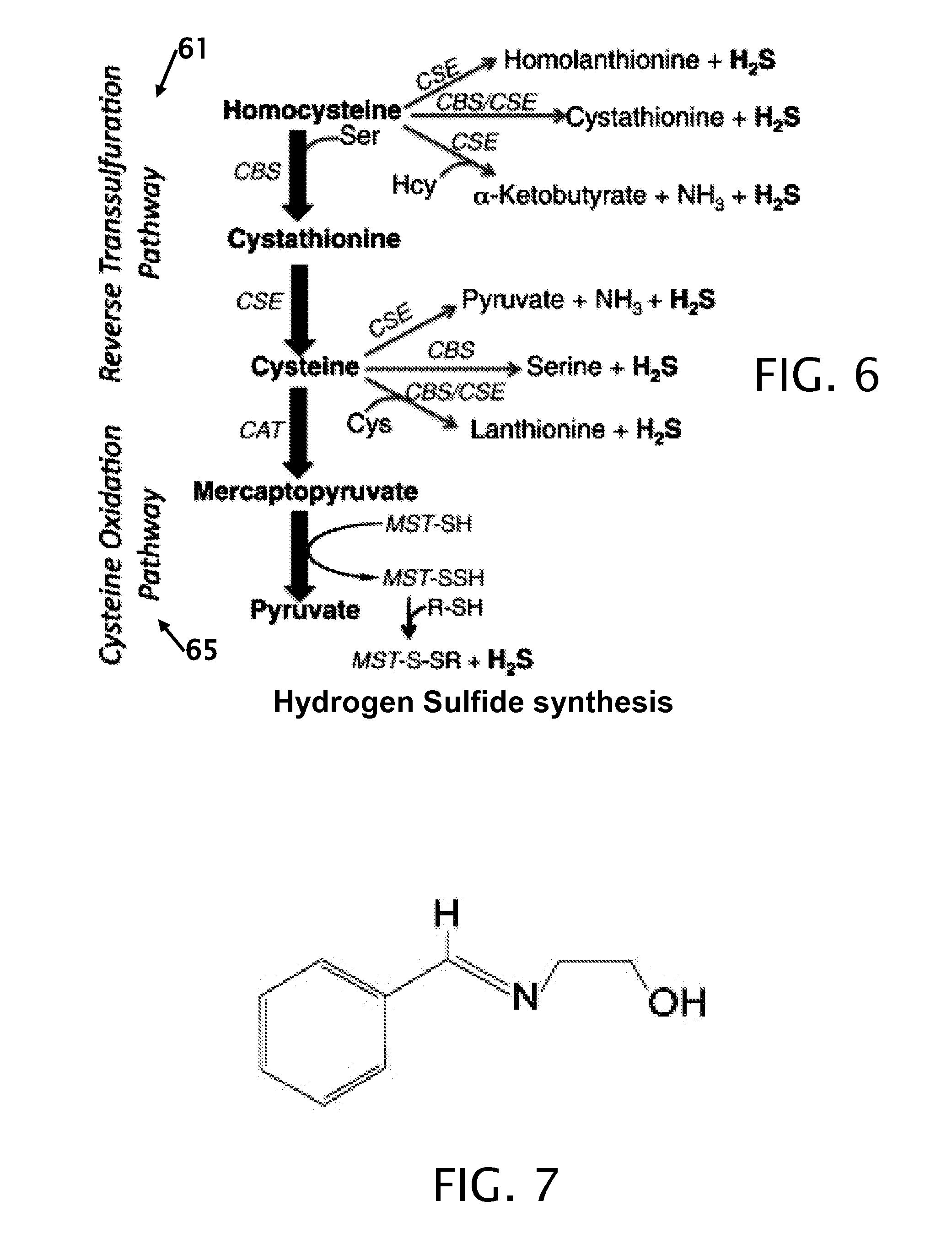Process of food preservation with hydrogen sulfide
a technology of hydrogen sulfide and food preservation, applied in the field of food preservation with hydrogen sulfide, can solve the problems of high post-harvest loss of products in africa, loss at the retailer and consumer level, and delayed food ripening, so as to prevent food spoilage, increase the shelf life of foods, and delay food ripening
- Summary
- Abstract
- Description
- Claims
- Application Information
AI Technical Summary
Benefits of technology
Problems solved by technology
Method used
Image
Examples
Embodiment Construction
[0060]Perspective on metabolism and energy production in living organisms; Hydrogen, oxygen, and Hydrogen sulfide.
[0061]All living organisms are required to make energy for the synthesis of structural molecules, housekeeping of their molecular machinery, repair of damaged molecules, movement, growth and other cell functions. However, the method by which energy is produced is vastly different among organisms that live either on the surface of the earth, within oceans or deep within the crust of the earth mantle.
[0062]Hydrogen
[0063]Hydrogen is an element with the chemical formula H which is comprised of one proton and one electron. Hydrogen is the lightest and first gas in the periodic table and is a colorless, odorless, tasteless, non-toxic, non-metallic gas which is naturally present as a diatomic gas with the molecular formula H2. Hydrogen is the most abundant chemical substance, constituting roughly 75% of the Universe's baryonic mass. However, because of its light weight, which e...
PUM
 Login to View More
Login to View More Abstract
Description
Claims
Application Information
 Login to View More
Login to View More - R&D
- Intellectual Property
- Life Sciences
- Materials
- Tech Scout
- Unparalleled Data Quality
- Higher Quality Content
- 60% Fewer Hallucinations
Browse by: Latest US Patents, China's latest patents, Technical Efficacy Thesaurus, Application Domain, Technology Topic, Popular Technical Reports.
© 2025 PatSnap. All rights reserved.Legal|Privacy policy|Modern Slavery Act Transparency Statement|Sitemap|About US| Contact US: help@patsnap.com



